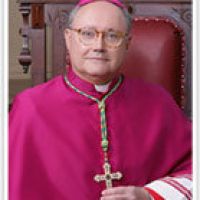Mirrors of Justice which is a Catholic Legal Site has has a serious of interesting post lately.
This post , Churches and Sprawl , which engages a article in the Toronto Star .
The article says in part:
Fast-growing churches, frustrated with the slow pace of municipal planning, often find themselves pushed into setting up shop in rural areas on the edge of town, where they end up contributing to suburban sprawl, a Ryerson University study has found. .....Once the new church is built, the parishioners soon follow, and housing springs up around the building – determining the character of the new subdivision.
When I read this at first at Mirrors I was highly skeptical of this study. In some way I would love it if this was true. Especially in a Catholic context because it would show an unexpected trend back to the health of the Catholic Parish. However, I have never seen this occur in the United States as to the usual example of Evangelical Churches or other Protestant ones. I can think of some big mega Churches and average size churches and I do not detect mass movement of people building around them just because of the Church is located there.
However when I clicked on the article it became a lot clearer:
Agrawal's study, New Ethnic Places of Worship and Planning Challenges, handed out at the conference, looked at four temples and churches of different faiths in the Greater Toronto Area – Hindu, Muslim, Catholic and Sikh.
At one, construction of a temple soon led to a subdivision of between 4,000 and 5,000 people. The sprawling neighbourhood, however, has no school, no community centre, no bus service and after more than six years is only now developing a commercial presence.
"All those things would have been there with traditional planning," said Agrawal, who specializes in planning and immigration.
The small neighbourhood church of the past is fast being replaced by larger "destination" churches, Agrawal said, but congregations have trouble finding a large enough location for both the worship space and parking for all the parishioners.
It's a trend he found most often among fast-growing ethnic communities.
At first, they meet in members' homes, moving to rented space as the congregations grow.
Eventually, as the community as a whole increases in size, the group looks to build its own place of worship.
I do not have the actual study. However I am willing to bet that Catholics in Canada( I find it odd that this was the only Christian group it appears they studied) are following the Church. However I the find the immigrant dynamic as to the other faiths interesting?
Is this just a Canada thing? Are we seeing this duplicated in the United States? If it is being duplicated in the United States I am not hearing about it. True there are ethnic neighborhoods but lets say when the Hindu temple in Dallas moves to the outskirts are whole new neighbor hoods becoming new Hindu Enclaves?
Canada is of course different being that so much of it populations is within a hundred miles of the U.S. Border. Thus land use is a much more critical issue. I also suppose there could be issues of how the two different countries assimilate immigrant folks.
Anyway interesting article.
Friday, June 27, 2008
Do Churches Contribute to Urban Sprawl?
Posted by
James H
at
6/27/2008 09:27:00 AM
![]()
Labels: environment, politics
Subscribe to:
Post Comments (Atom)















3 comments:
Churches go where the people are. I do not know a single person who has moved to go to a specific church but thats just me.
HEy there Stranger. I have been waiting for to update!!!
Yeah, work has been killing me and we followed that up by immediately going to the beach for five days. It was a well needed break....
Post a Comment